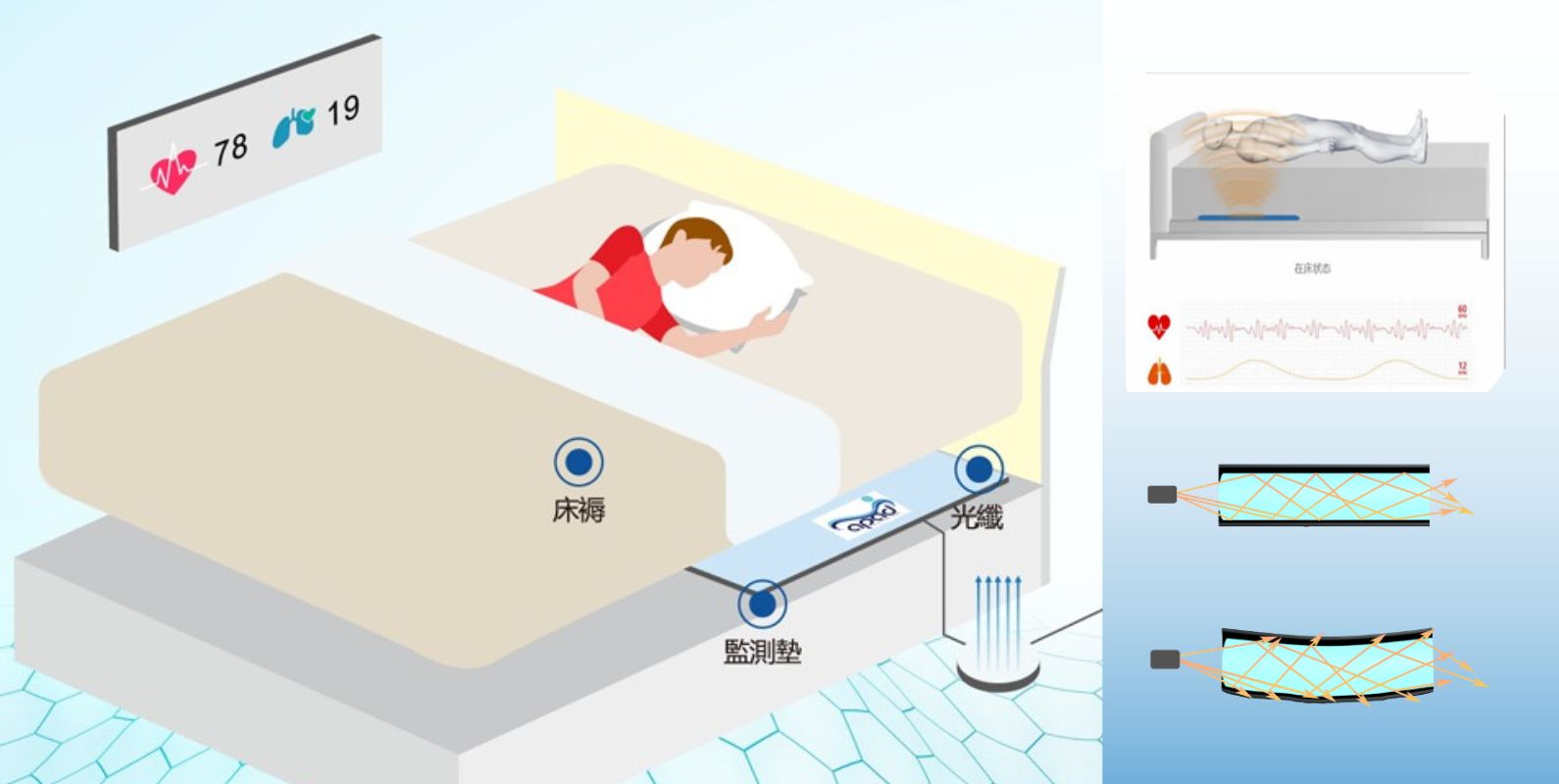Technology & Product
Optical Fibre Micro Vibrations Sensor
The APAD sensor uses special optical fibres to detect the continuous signal changes obtained from the micro-vibrations and fluctuations of the human heart beating and lung breathing. Accurate data collected by the sensors is processed using exclusive algorithms to get the analysis results of the heart rate, breath rate, body movements and sleep quality. The sensor not only uses multi-structure special optical fibres but also incorporates the partitioned circular optical path design so that the sensor can adapt to different sleeping postures and accurately collect health data regardless of the sleeping posture of the person on the bed.

Advantages of Fibre Optic Sensors
Unfettered
The contact-free design seamlessly integrates into users' daily lives without disruption.
Accurate
The built-in multi-structure hybrid optical fibre and ring optical path can sense ultra-weak signals and accurately monitor various vital signs of the human body.
Sensitive
The core diameter of the optical fibre is less than one-sixth that of human hair. Its microstructure can distinguish vital signs more accurately and is sensitive to vibration frequencies. It can identify potential disease signals based on the bioelectric currents and vibration frequencies generated by different signs. It can reorganize and restore even if the signals are unclear.
Safe
The optic fibre sensor is heat-resistant, radiation-free, no current energy-efficient and safe.
Stable
The optical fibers in the APAD induction pad are distributed on the human body's shoulders, neck, chest and abdominal cavity to avoid signal interference from different parts and fully adapt to different sleeping positions.

